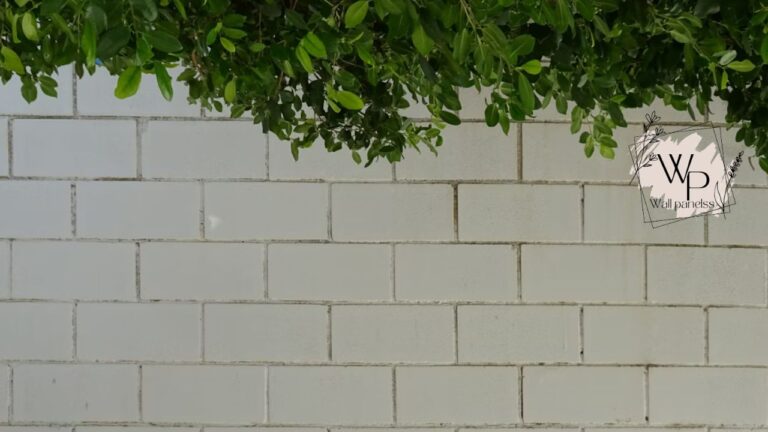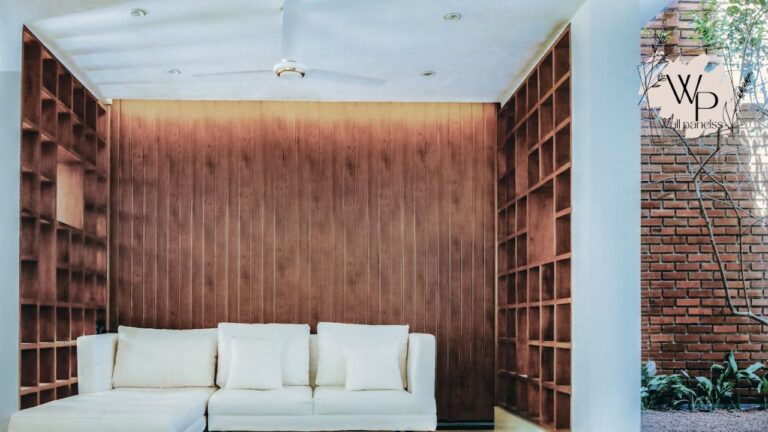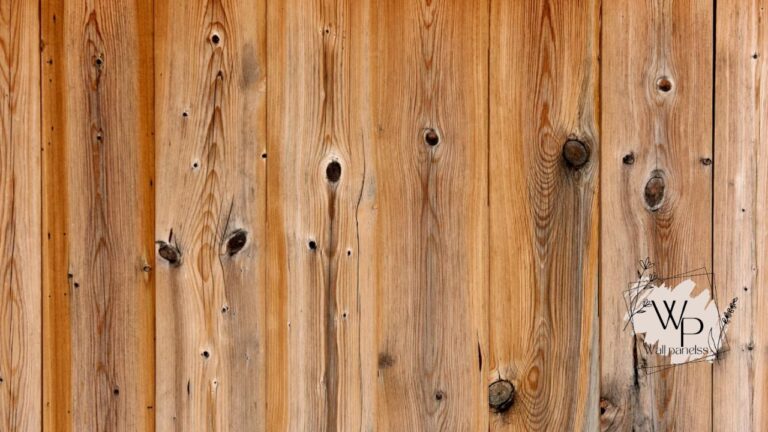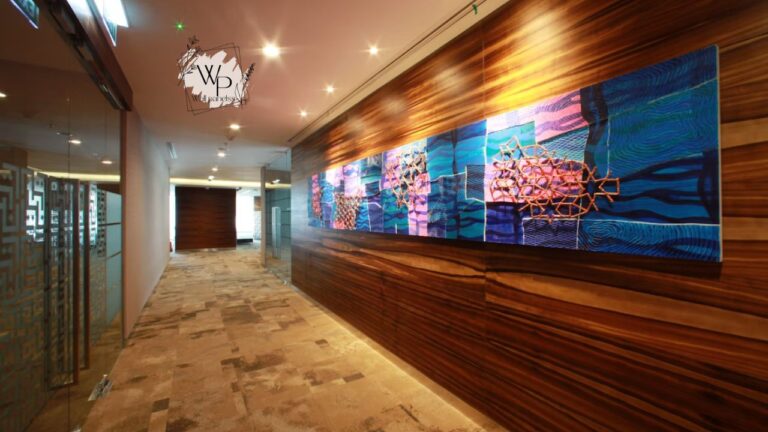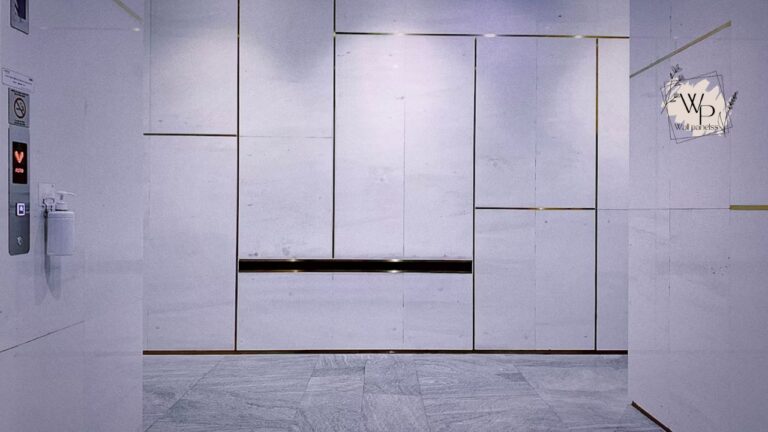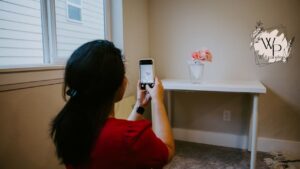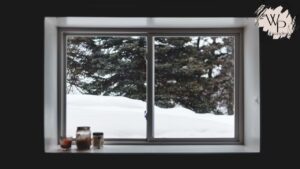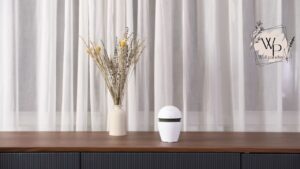Have you ever walked into a room and felt instantly captivated by its atmosphere? Often, the secret lies in the walls. A thoughtful panel wall design can completely transform a space, elevating it from ordinary to extraordinary. It’s about adding texture, depth, and a touch of personality that paint alone simply cannot achieve.
This design element isn’t just a fleeting trend; it’s a timeless way to infuse character into your home or office. Whether you’re aiming for a cozy, rustic vibe or a sleek, modern aesthetic, the right panel wall design serves as a stunning backdrop. It’s a game-changer for interior design, offering endless possibilities to express your unique style.
Understanding Panel Wall Design: A Quick Overview
Before diving deep into the world of wall panels, let’s get a clear picture of the options available. The variety can be dazzling, but understanding the core types, materials, and costs will help you make an informed decision for your project.
| Design Type | Common Materials | Average Cost (Per Sq. Ft.) | Best For |
|---|---|---|---|
| Wainscoting | MDF, Wood, PVC | $7 – $40 | Traditional, Farmhouse, Transitional spaces |
| Shiplap | Wood, MDF, Vinyl | $2.50 – $12 | Modern Farmhouse, Coastal, Rustic styles |
| Board and Batten | Wood, MDF, PVC | $5 – $20 | Craftsman, Farmhouse, Modern Accent Walls |
| Fluted/Reeded Panels | Wood, MDF, HDF | $10 – $50 | Modern, Art Deco, Minimalist interiors |
| 3D Wall Panels | Gypsum, PVC, Bamboo | $2 – $30 | Contemporary, Futuristic, Commercial spaces |
| Acoustic Panels | Felt, Wood, Fabric | $4 – $60 | Home Theaters, Offices, Studios |
| Upholstered Panels | Fabric, Velvet, Leather | $15 – $75 | Bedrooms, Luxury Living Rooms |
The Timeless Appeal of Wall Paneling
Wall paneling has a rich history, originally used in grand old homes for insulation and to protect walls from damage. Today, its purpose has evolved. While still practical, the primary driver for installing a panel wall design is aesthetic. It adds a layer of architectural interest that can make a new build feel more established or an old home feel refreshed.
This design choice is incredibly versatile. A simple panel wall design can act as a subtle enhancement, while a bold, geometric pattern can become the room’s focal point. It’s all about how you use it to tell your story.
Why Homeowners are Falling in Love with Paneling
There’s a reason you’re seeing accent walls and paneled rooms all over design blogs and social media. The benefits are both beautiful and practical.
- Durability: Panels are tougher than drywall. They resist scuffs, dents, and dings, making them perfect for high-traffic areas like hallways, entryways, and family rooms.
- Hiding Imperfections: Do you have walls that are a little wavy or have minor cracks? A well-executed panel wall design can cover these flaws flawlessly, giving you a smooth, pristine surface.
- Increased Home Value: Architectural details are a huge selling point. A tasteful panel wall design can add perceived value to your home, making it more attractive to potential buyers who appreciate custom finishes.
- Sound Insulation: Certain types of panels, especially acoustic or upholstered ones, can help dampen sound. This is a fantastic bonus for home offices, media rooms, or bedrooms facing a noisy street.
Exploring Different Styles of Panel Wall Design
The beauty of paneling lies in its variety. Let’s explore some of the most popular styles to help you find the perfect match for your home’s personality.
Classic Wainscoting: Elegance and Tradition
Wainscoting is the quintessential classic. It typically covers the lower third of a wall and consists of panels framed by stiles and rails. This style brings a sense of formal elegance to dining rooms, entryways, and formal living areas.
Types of Wainscoting
- Raised Panel: This is the most traditional form, featuring a central panel with beveled edges that make it “rise” above the surrounding frame. It creates a very formal, sophisticated look.
- Flat Panel: Common in Craftsman and Shaker styles, this type uses a simple, flat central panel. It’s cleaner and less ornate than its raised counterpart.
- Beadboard: Featuring vertical grooves or “beads” milled into the wood, beadboard offers a more casual, cottage, or coastal feel. It’s a charming choice for bathrooms, kitchens, and mudrooms.
A homeowner, Sarah M., recently shared her experience: “We added raised panel wainscoting to our dining room, and the transformation was astonishing. It went from a plain box to a room with real character and grace. It was the best design decision we made.” Her project is a testament to the power of a classic panel wall design.
Board and Batten: Modern Farmhouse Charm
Board and batten has exploded in popularity, becoming a hallmark of the modern farmhouse aesthetic. This style involves placing wide boards vertically or horizontally on the wall and covering the seams with thin strips of wood called “battens.”
The result is a clean, geometric pattern that can be customized in endless ways. You can create a simple grid, a vertical pattern to make ceilings feel higher, or a horizontal layout for a more modern effect. The versatility of this panel wall design is its greatest strength. It feels both rustic and refined, fitting comfortably in bedrooms, living rooms, and hallways.
Shiplap: From Barns to Boutiques
Once used for sheds and barns, shiplap has become a design superstar. These wooden boards feature a special rabbet joint that allows them to overlap, creating a distinctive gap between each board.
While strongly associated with the farmhouse look, shiplap can be surprisingly versatile. Painted a crisp white, it feels coastal and airy. A dark charcoal or black shiplap panel wall design can create a dramatic, modern accent wall. You can even install it vertically or in a herringbone pattern for a unique twist.
Fluted and Reeded Panels: The Rise of Texture
One of the most exciting trends in interior design is the move towards texture, and fluted panels are leading the charge. These panels feature a series of concave grooves (flutes) or convex half-rounds (reeds) that create a stunning play of light and shadow.
This panel wall design adds instant sophistication and a touch of Art Deco glamour. It’s perfect for creating a focal point behind a bed, on a media wall, or even on kitchen islands and cabinetry. The vertical lines draw the eye upward, adding a sense of height and grandeur to any room.
As one interior designer noted, “Fluted panels are like jewelry for your walls. They add that final layer of polish and texture that makes a room feel truly complete and luxurious.”
3D Wall Panels: Sculptural and Dramatic
For those who want to make a bold statement, 3D wall panels are the answer. These panels come in a huge variety of geometric and organic patterns, from waves and honeycombs to intricate abstract designs. Made from materials like gypsum, PVC, and plant fibers, they turn a flat wall into a sculptural work of art.
A 3D panel wall design is perfect for contemporary and minimalist spaces where the wall itself becomes the main decorative feature. They are particularly effective in commercial spaces like hotels and restaurants but are increasingly being used in homes to create show-stopping accent walls in living rooms and entryways.
Choosing the Right Material for Your Panel Wall Design
The material you choose will impact the look, durability, and cost of your project. Each has its own set of pros and cons.
Medium-Density Fiberboard (MDF)
MDF is an engineered wood product made from wood fibers, wax, and resin. It’s an incredibly popular choice for interior paneling, and for good reason.
- Pros: Inexpensive, very smooth (perfect for painting), stable (won’t warp or crack like solid wood), and easy to cut and machine.
- Cons: Not water-resistant (unless you use moisture-resistant MDF), heavy, and can be damaged by impacts more easily than solid wood.
MDF is ideal for painted finishes like wainscoting and board and batten in dry areas of the home. Its smooth surface ensures a flawless, professional-looking paint job every time.
Solid Wood
The original and, for many, the ultimate material for paneling. Nothing quite matches the warmth and natural beauty of real wood.
- Pros: Authentic beauty, strong and durable, can be stained to highlight the grain, adds significant value to a home.
- Cons: Expensive, susceptible to expanding and contracting with changes in humidity, can be more difficult to work with.
Poplar is a great choice for a painted panel wall design as it’s affordable and smooth. For stained finishes, woods like oak, walnut, and cherry offer breathtaking grain patterns.
PVC and Vinyl
These synthetic materials are a practical choice for areas with high moisture.
- Pros: 100% waterproof, lightweight, easy to clean, resistant to mold and mildew, relatively inexpensive.
- Cons: Can sometimes look less authentic than wood or MDF, may be prone to scratching.
PVC is the perfect material for a panel wall design in a bathroom, laundry room, or basement where moisture is a concern.
Upholstered and Acoustic Panels
These panels focus on softness and sound, adding another layer of function to the design.
- Pros: Excellent sound absorption, add a luxurious and cozy texture, available in countless fabrics and colors.
- Cons: Can be expensive, may require professional installation, harder to clean than hard surfaces.
An upholstered panel wall design behind a bed creates a stunning and comfortable headboard, while acoustic panels are essential for creating the perfect home theater or a quiet, focused home office.
DIY vs. Hiring a Professional
Once you’ve settled on a style and material, the next big question is: should you do it yourself or hire a pro?
The DIY Route
Tackling a panel wall design as a DIY project can be incredibly rewarding. It’s a great way to save money and learn a new skill.
- Best for: Simpler designs like a basic board and batten or shiplap accent wall.
- Skills Needed: Accurate measuring, level and straight cutting (a miter saw is highly recommended), caulking, and painting.
- Pro Tip: Measure three times, cut once! Accuracy is everything. Small measurement errors can compound and become very noticeable.
There are thousands of online tutorials that can walk you through the process step-by-step. For many homeowners, the sense of accomplishment from completing a beautiful panel wall design themselves is priceless.
Hiring a Professional
For more complex projects or if you simply lack the time and tools, hiring a carpenter or finish contractor is the way to go.
- Best for: Complicated layouts, traditional raised-panel wainscoting, or materials that are difficult to work with.
- Benefits: Flawless execution, professional-grade tools and experience, saves you time and potential frustration. The finish is often cleaner and more refined.
- Finding a Pro: Get multiple quotes, check references, and look at portfolios of their previous work. A good contractor will guide you through the panel wall design process and ensure a stunning result.
User Mark T. gives this advice: “I tried to DIY a complex wainscoting pattern and quickly got in over my head. I hired a pro to fix it and finish the job. The difference in quality was night and day. For intricate work, it’s worth every penny.”
Integrating Panel Wall Design into Your Home
A successful paneling project is about more than just attaching boards to a wall. It’s about thoughtful integration with the rest of your space.
The Accent Wall
The most common application is creating an accent or feature wall. This is a fantastic way to dip your toes into the world of paneling without committing to an entire room.
- Where to put it: The wall behind your bed, the wall your TV is on, or the main wall you see when you enter a room.
- Design Tip: Use the panel wall design to create a focal point. A dark, moody board and batten wall can make a TV disappear, while a beautiful fluted panel wall can frame a bed like a piece of art.
Paneling the Entire Room
For a truly immersive and dramatic effect, consider paneling all four walls of a room. This is a bold move that pays off in spades.
- Best for: Dining rooms, studies, libraries, and bedrooms where you want to create a cozy, enveloping atmosphere.
- Color is Key: To prevent the room from feeling small or heavy, color choice is crucial. Painting a full room of paneling in a light color keeps it airy. Conversely, a dark color like navy or deep green creates a wonderfully moody and intimate space. This is where the magic of a complete panel wall design truly shines.
Creative and Unexpected Applications
Think beyond the four walls of a room! Paneling can be used in creative ways to add architectural detail throughout your home.
- Ceilings: A paneled ceiling can add incredible visual interest, especially in rooms with high ceilings.
- Kitchen Islands: Wrapping a kitchen island in a panel wall design like beadboard or fluted panels adds a custom, high-end touch.
- Doors and Cabinetry: Applying thin paneling or molding to flat doors or cabinet fronts is a brilliant way to upgrade them on a budget.
A Nod to Design Heritage: The Influence of Jean-Michel Frank
While we’re discussing modern applications, it’s inspiring to look back at designers who pioneered a minimalist yet luxurious aesthetic. Jean-Michel Frank, a French interior designer in the early 20th century, was a master of using subtle, textural wall treatments.
Though not a celebrity in the modern sense, his influence is immense. He was known for covering walls in materials like parchment, straw marquetry, and gypsum with a matte, chalky finish. His personal background, rooted in a wealthy European banking family, gave him access to the finest artisans and materials. His “net worth” was less about personal finance and more about the incredible cultural and artistic wealth he created.
Frank’s philosophy was about stripping away the unnecessary to reveal an elegant, understated core. This spirit lives on in today’s minimalist panel wall design trends, where simple forms, clean lines, and beautiful textures create a quiet, confident luxury.
The Financials: Budgeting for Your Project
The cost of a panel wall design can range dramatically, from a few hundred dollars for a DIY accent wall to many thousands for a professionally installed, full-room solid wood application.
- DIY Accent Wall (e.g., MDF Board & Batten): You can often complete a small-to-medium accent wall for $200 – $600, including materials and paint.
- Professional Installation (Accent Wall): Expect to pay $800 – $2,500+, depending on the complexity and materials. Labor is a significant part of the cost.
- Full Room Paneling (Professional): For a full room, costs can easily range from $3,000 to $10,000 or more, especially with high-end materials and intricate designs.
Always get detailed quotes that break down the cost of materials and labor. This helps you compare offers and understand exactly what you’re paying for. A great panel wall design is an investment in your home’s beauty and value.
Final Thoughts: Making Your Walls Wonderful
A panel wall design is more than just a decoration. It’s an architectural element that adds soul, depth, and lasting value to your home. It’s a way to break free from flat, boring walls and create spaces that feel custom, intentional, and deeply personal.
From the timeless elegance of wainscoting to the modern drama of 3D panels, there is a style to suit every taste and every home. Whether you embark on a rewarding DIY journey or entrust the work to a skilled professional, the result will be a transformation you’ll enjoy for years to come. Your walls are a blank canvas; a stunning panel wall design is the brushstroke that turns them into a masterpiece.
Frequently Asked Questions (FAQs)
Q: Does wall paneling make a room look smaller?
A: Not necessarily! It’s all about how you use it. Using vertical panels like board and batten can actually make a ceiling feel higher. Painting the paneling a light color will also keep the room feeling bright and open. A dark, full-room panel wall design can create a cozy, intimate feel, which isn’t the same as feeling small.
Q: Is panel wall design a timeless look or just a trend?
A: While certain styles like shiplap have been very trendy, paneling itself is absolutely timeless. Styles like wainscoting and board and batten have been used for centuries and continue to be a staple of classic design. Choosing a style that complements your home’s architecture is the key to longevity.
Q: Can I install paneling in a bathroom?
A: Yes, you can! The trick is to choose the right material. PVC or vinyl panels are 100% waterproof and ideal for this purpose. If you want a wood or MDF look, you must use moisture-resistant MDF and seal it thoroughly with high-quality, bathroom-specific paint to protect it from humidity. A proper panel wall design can add so much character to a powder room or primary bath.
Q: What is the easiest type of paneling to install for a beginner?
A: A simple board and batten accent wall using MDF boards is often considered the most beginner-friendly project. The cuts are straightforward (mostly straight cuts), and the process is forgiving. Shiplap is also relatively easy, but getting the boards perfectly level over a large area can be tricky.
Q: How do I clean a paneled wall?
A: For painted wood or MDF panels, cleaning is simple. A regular dusting and occasional wipe-down with a damp cloth are usually all that’s needed. For deeper grooves in a panel wall design, a vacuum with a brush attachment works wonders. For upholstered panels, you would follow the cleaning instructions for that specific fabric, often involving vacuuming and spot-treating.
Admin Recommendation
WallPanel Home Assistant Idle: The Ultimate Guide to Smart Home Displays


